Mold Flipper: Why Are Thai Manufacturers Upgrading Now?
Are you still using overhead cranes and chains to flip heavy, expensive molds in your factory? It's a method many of us have used for years. But every time that multi-ton mold swings in the air, there's a collective holding of breath. One slip, one moment of misjudgment, and you could be facing a catastrophic equipment failure, a damaged mold that costs a fortune to repair, or worse, a serious injury to one of your team members. These hidden risks and inefficiencies are silent profit killers. A modern mold flipper eliminates these dangers, providing a controlled, safe, and remarkably efficient way to handle your molds, turning a high-risk operation into a smooth, predictable part of your workflow.
Thai manufacturers are upgrading to mold flippers now primarily to meet stricter workplace safety regulations, enhance operational efficiency to stay competitive in the global market, and protect their high-value molds from damage. The move is a direct response to the increasing costs associated with accidents, production downtime, and equipment repair, making the upgrade a critical investment for long-term profitability and sustainability.
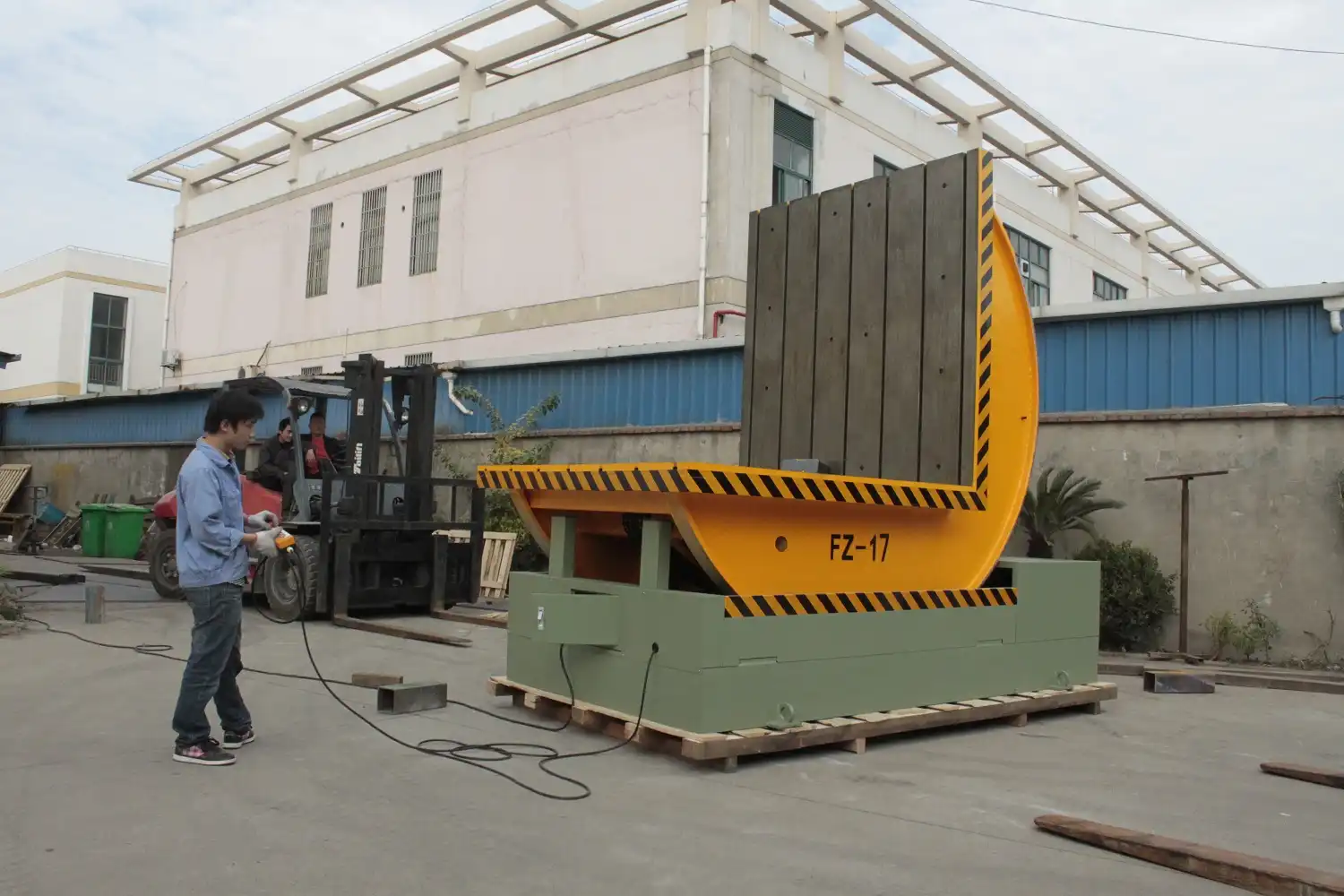
This trend isn't just about buying new equipment. It's a fundamental shift in manufacturing philosophy. I've seen this firsthand. In my early days as an engineer, I worked on factory floors where the "old way" was the only way. Later, as a factory owner myself, I had to make the same decisions you are facing now. I learned that investing in the right equipment, especially for handling heavy materials, is not an expense. It is a strategic investment in safety, speed, and quality. Let's break down the specific reasons why your counterparts in Thailand are making this change and what it could mean for your operations.
What safety risks do traditional mold flipping methods pose?
Relying on an overhead crane with chains or slings to turn a heavy mold is a common practice in many workshops. On the surface, it seems to get the job done. But this method is filled with hidden dangers. Imagine your team, standing close by, trying to guide a massive, swinging block of steel. A sudden gust of wind from an open bay door, a slight imbalance in the rigging, or a momentary lapse in the crane operator's concentration can turn a routine task into a life-threatening emergency. The risk isn't just theoretical; it's a constant, looming threat that can lead to devastating consequences for your people and your business.
Traditional methods, like using cranes and chains, pose significant safety risks including dropped loads from sling failure, uncontrolled swings that can crush nearby objects or personnel, and severe pinch point injuries during manual positioning. These methods inherently lack the stability and precise control offered by a dedicated mold flipper, placing both your team and your expensive equipment in constant, unnecessary danger.
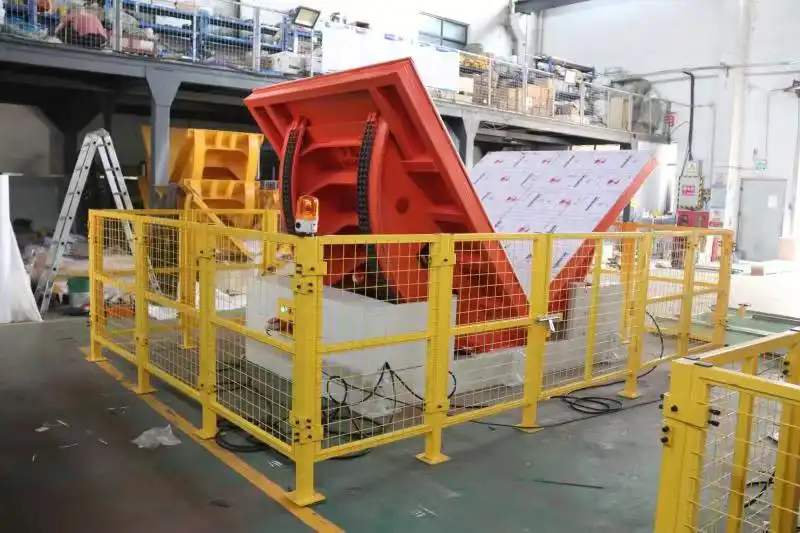
I've walked through countless factories and the story is often the same. The focus is on the main production machines, while the auxiliary processes, like mold handling, are overlooked until something goes wrong. This is a critical mistake. To truly understand why an upgrade is necessary, we need to look closer at the specific hazards of these outdated practices. It's not about pointing fingers; it's about acknowledging the risks so we can systematically eliminate them. As an engineer, my goal has always been to build robust processes, and safety is the foundation of any robust process. A single accident can wipe out a year's worth of profit and damage a company's reputation beyond repair.
The Grave Danger of Dropped Loads
The most catastrophic failure in crane-based mold flipping is a dropped load. This can happen for several reasons: a worn-out sling finally snaps, a hook latch fails, or the rigging itself is improperly balanced, causing the mold to slip out. When a multi-ton mold falls, the consequences are immediate and severe. It can shatter the factory floor, damage or destroy other machinery nearby, and present a lethal threat to anyone in the vicinity. The mold itself, often a precision tool worth tens or even hundreds of thousands of dollars, can be damaged beyond repair. I remember a client in the steel industry who experienced this. A wire coil was dropped, not a mold, but the principle is the same. The dropped coil not only damaged the concrete but also narrowly missed a key control panel for the production line. The line was down for three days, a cost far exceeding the value of the coil itself. A dedicated mold flipper supports the load across a large, stable platform throughout the entire 90 or 180-degree rotation, making a dropped load virtually impossible.
The Hidden Risk of Uncontrolled Movement
Even if the rigging holds, a suspended load is inherently unstable. The mold can swing or spin unexpectedly, creating a large, dangerous zone around it. Workers trying to guide the mold into position with their hands or with push poles are put in an incredibly vulnerable position. This uncontrolled movement makes precise placement for maintenance or on a press bed extremely difficult and time-consuming. Operators have to "jog" the crane controls, making tiny, jerky movements to align the mold. This process is slow and introduces more opportunities for error. A mold flipper, by contrast, moves the mold along a fixed, predictable path. The movement is smooth and can be stopped at any point with precision, allowing for safe and easy access for inspection or work.
The Toll on Your Team: Strain and Injury
The traditional method is also physically demanding. Workers are often required to manually attach heavy chains, push and pull on the mold to control its swing, and work in awkward, strained postures. This leads to a high risk of musculoskeletal injuries, such as back strain, sprains, and hernias, which can develop over time. Furthermore, the final positioning of the mold creates numerous pinch points between the mold and the floor, or the mold and the machine it's being loaded into. A moment of inattention can lead to crushed fingers or hands. This reality is why experienced leaders like Javier Morales, with his background on the factory floor, understand that protecting your people is paramount. A mold flipper is operated from a safe distance via a control panel or remote, eliminating the need for manual handling and keeping your team out of the danger zone.
| Risk Factor | Traditional Crane & Sling Method | Dedicated Mold Flipper |
|---|---|---|
| Load Security | High risk of slipping or dropping | Extremely high; load secured to platform |
| Control | Low; subject to swinging and spinning | High; controlled, predictable motion path |
| Personnel Proximity | High; workers must be close to guide | Low; operated from a safe distance |
| Pinch Points | Numerous and unavoidable | Minimized or eliminated by design |
| Physical Strain | High; manual rigging and guiding | Very low; push-button operation |
| Process Time | Slow and unpredictable | Fast, repeatable, and predictable |
How does a mold flipper boost operational efficiency?
Think about your current mold changeover process. How long does it take? Does it require your best crane operator and two other people to slowly and carefully maneuver the mold? This downtime is a major bottleneck. While the mold is being flipped and moved, your valuable press or injection molding machine sits idle. This lost production time adds up quickly, hurting your bottom line and making it difficult to meet tight deadlines from customers in demanding sectors like automotive or electronics, which are huge in Thailand. Now, imagine cutting that changeover time by 75% or more. That's the kind of direct impact a mold flipper can have on your operational efficiency.
A mold flipper boosts operational efficiency by drastically reducing the time required for mold changeovers, freeing up skilled labor for other value-added tasks, and creating a highly predictable and repeatable workflow. This directly increases machine uptime, boosts overall production capacity, and allows for greater agility in production scheduling.
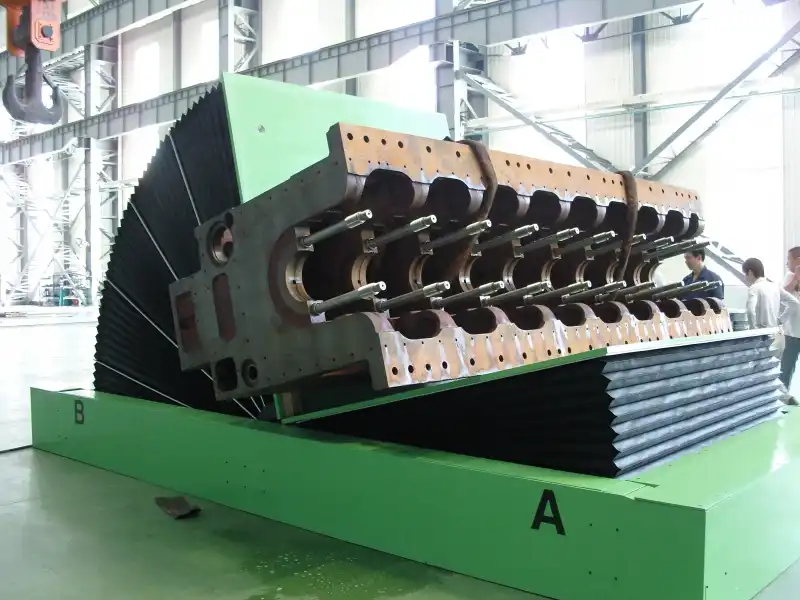
When I started my own factory, I was obsessed with efficiency. Every minute a machine wasn't running was money lost. It's a simple equation that every factory owner, from a small workshop to a massive steel mill like Javier's, understands. We often focus on the cycle time of the machine itself, but the time between cycles—the setup time—is just as important. Streamlining this "unproductive" time is where massive gains are often found. A mold flipper is a perfect example of a tool designed to attack this specific inefficiency, transforming a slow, cumbersome task into a quick, simple operation.
Slashing Mold Changeover Time
The most significant efficiency gain comes from speed. A typical mold flip using an overhead crane can take anywhere from 30 minutes to over an hour, depending on the mold's size and complexity. This process involves finding the right slings, carefully rigging the mold, the slow lift and turn, and then the painstaking process of positioning it. By comparison, a mold flipper can perform the same task in under 5 minutes. The operator simply places the mold on the flipper's table with a forklift or crane, steps back to the control panel, and pushes a button. The machine performs the 90-degree rotation smoothly and quickly. This dramatic time saving means your production machine gets back to making parts faster. If you perform multiple mold changes a day, the cumulative effect on your output is enormous. It allows you to take on more jobs and respond to customer demands with greater flexibility.
Optimizing Labor Allocation
The traditional method is labor-intensive. It often ties up two or three people: a skilled crane operator and one or two riggers on the floor. These are often experienced, valuable employees. While they are busy with the slow process of flipping a mold, they are not available for other critical tasks. A mold flipper, on the other hand, can be safely operated by a single person. This frees up your other skilled workers. Your crane operator can be moving raw materials or finished goods, and your floor staff can be preparing the next job or performing other maintenance. This optimization of labor is a key goal for any forward-thinking manager. It's not about reducing headcount; it's about using your talented people more effectively to increase the overall productivity of your entire operation.
Creating a Predictable, Standardized Workflow
With a crane, every mold flip is slightly different. The time it takes can vary depending on the operator, the specific mold, and other activities happening on the factory floor. This variability makes it difficult to schedule production with precision. A mold flipper introduces standardization. The process is the same every time, and the time it takes is consistent and predictable. This allows for much tighter and more accurate production planning, aligning perfectly with goals like Javier's to improve capacity utilization through smart scheduling and MES integration. When you know a mold change will take exactly 15 minutes every time, you can build a production schedule that maximizes the uptime of your primary equipment and eliminates guesswork. This predictability is the cornerstone of a modern, efficient, and data-driven manufacturing environment.
| Efficiency Metric | Traditional Crane & Sling Method | Dedicated Mold Flipper |
|---|---|---|
| Average Time per Flip | 30 - 60+ minutes | 3 - 10 minutes |
| Labor Required | 2 - 3 persons (crane operator, riggers) | 1 person (operator) |
| Process Consistency | Low; varies with operator and mold | High; standardized and repeatable |
| Machine Downtime | High | Minimized |
| Scheduling Impact | Creates uncertainty and delays | Enables precise, predictable planning |
What are the long-term cost savings of upgrading to a mold flipper?
When you first look at the price of a mold flipper, it can seem like a significant capital expense. I understand that. As a factory owner, every major purchase requires a careful analysis of the return on investment (ROI). It's easy to focus on the upfront cost and overlook the substantial, ongoing expenses of not upgrading. The hidden costs of your current method—the "soft costs" of minor mold damage, the lost revenue from extended downtime, and the ever-present financial risk of a major accident—can be far greater than the investment in a new machine.
The long-term cost savings from a mold flipper are substantial and come from four key areas: preventing expensive damage to your molds, dramatically reducing lost revenue from production downtime, lowering insurance premiums and compensation costs by creating a safer work environment, and optimizing labor costs associated with mold handling.
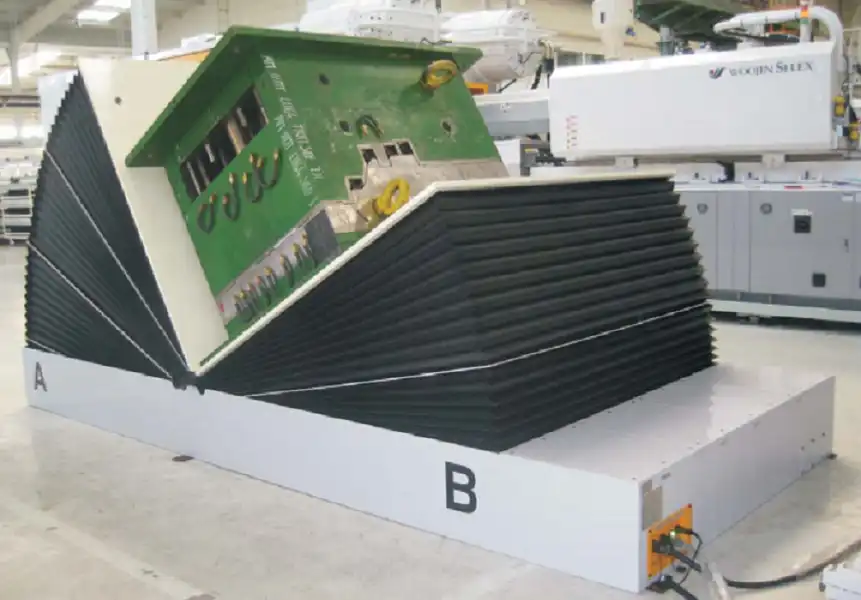
This is a conversation I have all the time with clients. A CEO like Javier Morales wouldn't just look at the price tag; he'd perform a rigorous feasibility analysis. That’s the right approach. When we do this analysis together, the numbers almost always tell a clear story. The investment in a mold flipper pays for itself, often much faster than people expect. You aren't just buying a piece of steel; you're buying insurance against damage, a tool for greater output, and peace of mind. Let's quantify these savings.
Protecting Your Most Valuable Asset: The Mold
Your molds are precision instruments. They are the heart of your production. Even a small nick, scratch, or dent from being bumped during a crane flip can lead to imperfections in your final product, resulting in scrap and rework. A more significant impact can require hours or days of skilled toolmaker time to repair, or in the worst case, the complete replacement of the mold. These costs are enormous. I once worked with a client in the automotive sector in Thailand whose mold for a bumper was damaged during a flip. The repair cost over $10,000 and took the line down for a week, causing them to miss a shipment deadline. A mold flipper handles your molds with care. The broad, flat tables support the entire surface, and the smooth, controlled rotation eliminates impacts and jarring. By protecting your molds, you are protecting your product quality and avoiding massive, unexpected repair bills.
The High Cost of Unplanned Downtime
Every minute your primary production machine is not running, you are losing money. It’s a simple fact. You can calculate your cost of downtime by adding up the lost revenue, idle labor costs, and factory overhead for every hour the machine is offline. For many manufacturers, this number can be thousands of dollars per hour. Because traditional mold flipping is slow and unpredictable, it creates significant downtime. A mold flipper, by cutting changeover time from an hour to just a few minutes, gives you back that precious production time. Over a year, this reclaimed time can equal days or even weeks of additional output, directly boosting your revenue and profitability without needing to invest in another primary production machine.
Reducing Insurance and Legal Costs
Safety and finance are directly linked. Factories with higher accident rates face higher workers' compensation insurance premiums. A single serious injury can lead to significant direct costs and potentially crippling legal expenses. By implementing a mold flipper, you are demonstrating a commitment to safety that your insurance provider will recognize. You are systematically engineering a major risk out of your process. This proactive approach can lead to lower insurance premiums. More importantly, it protects you from the immense financial and reputational damage of a serious accident. This is a crucial point for any business owner who understands that long-term stability is built on a foundation of safe operations.
| Cost Area | Impact of Traditional Method | Savings with Mold Flipper |
|---|---|---|
| Mold Repair/Replacement | High risk of damage from impacts and drops. | Drastically reduces risk, extending mold life. |
| Production Downtime | Long changeover times reduce machine uptime. | Cuts changeover by up to 90%, increasing output. |
| Labor Costs | Requires 2-3 skilled workers per flip. | Requires only 1 operator, freeing up labor. |
| Insurance/Legal Costs | Higher risk leads to higher premiums and potential claims. | Lower risk can lead to reduced premiums. |
| Scrap/Rework | Damaged molds produce faulty parts. | Protected molds ensure consistent quality. |
My Insights: How to Choose the Right Mold Flipper for Your Factory
So, you've seen the clear benefits in safety, efficiency, and cost savings. You understand why manufacturers across Thailand are making this strategic upgrade. The next logical step is choosing the right machine. This is where many people feel a bit lost. You'll see different drive systems, various safety features, and a wide range of prices. It can be confusing. I've been in your shoes, both as an engineer specifying equipment and as a factory owner signing the purchase order. I learned that buying a machine like this isn't a simple transaction. It's the beginning of a relationship. You are not just buying a mold flipper; you are choosing a partner who will support your growth.
Choosing the right mold flipper requires looking beyond the basic specifications of capacity and size. You must carefully evaluate the drive system (mechanical vs. hydraulic), demand a comprehensive set of modern safety features, and, most importantly, choose a manufacturer who offers robust support for installation, training, and long-term maintenance. This decision is about securing a total solution, not just a machine.
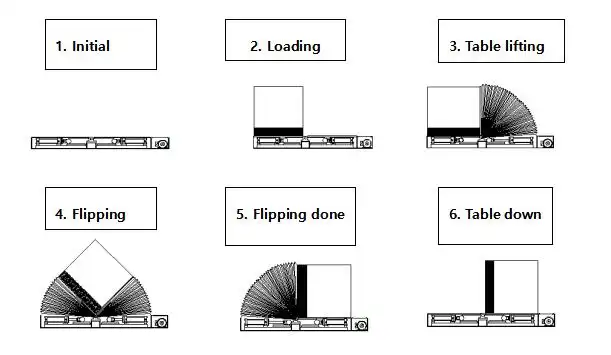
This is why I founded SHJLPACK. After achieving my own success in this industry, I wanted to give back. My mission is to be more than just a supplier. It's to be a knowledge-sharing partner, helping people like you make informed decisions that will genuinely improve your business. I want to help you avoid the mistakes I've seen others make. A business leader like Javier Morales looks for strategic partners, not just vendors, and that is the philosophy I've built my company on. Let’s talk about the key things I would advise any client to consider.
Mechanical vs. Hydraulic: What's the Right Drive System?
This is one of the first technical choices you'll face. Both systems can flip a mold, but they have distinct advantages and disadvantages.
- Mechanical Drive: These systems typically use a motor, gearbox, and chains or a screw jack mechanism. Their biggest advantages are precision, reliability, and low maintenance. They offer very smooth, repeatable motion and are not prone to leaks. This is often my recommendation for clean environments or when absolute positioning accuracy is critical. The maintenance is straightforward—mostly just periodic lubrication and inspection of the chains.
- Hydraulic Drive: These systems use hydraulic cylinders powered by a hydraulic power unit. Their main advantage is immense power in a compact size, making them suitable for extremely heavy loads. However, they can be less precise in their movement and carry the inherent risk of hydraulic fluid leaks, which can be a contamination issue and a slip hazard. They also require more maintenance, including checking fluid levels, filters, and hoses. For a hot and humid climate like Thailand's, hydraulic oil temperature and viscosity must be carefully managed.
The choice depends on your specific needs: load weight, required precision, and your factory environment.
Essential Safety Features You Must Demand
This is non-negotiable. A modern mold flipper should come with a suite of safety features as standard. Do not compromise here to save a little money.
- Emergency Stops: There must be multiple, easily accessible E-stop buttons on the main control panel and the machine itself.
- Overload Protection: The system must automatically prevent operation if the load exceeds the machine's rated capacity.
- Safety Interlocks: Access doors or gates to the operating area should have interlocks that stop the machine if opened during a cycle.
- Hold-to-Run Controls: The "operate" button should require the operator to hold it down during the motion. Releasing the button should instantly stop the machine. This prevents "walk-away" accidents.
- Warning Lights and Alarms: A flashing light and audible alarm should activate before and during machine movement to alert everyone in the area.
Thinking Beyond the Machine: Integration and Support
This is where a good supplier becomes a great partner. The machine itself is only part of the solution.
- Integration: How will the machine fit into your existing factory layout and workflow? A good partner will help you with layout drawings and ensure the flipper integrates seamlessly with your cranes, forklifts, and production machines.
- Installation and Training: Will they send qualified technicians to supervise the installation and commission the machine? Will they provide comprehensive training for your operators and maintenance staff? Proper training is essential for both safety and efficiency.
- After-Sales Support: What happens if you have a problem a year from now? Do they have a responsive service team? Can you get spare parts quickly and easily? This long-term support is what my client Javier would call "strategic." It's the assurance that your investment will be protected for years to come. This is the core of our "TOTAL SOLUTION FOR WRAPPING MACHINE" slogan at SHJLPACK. We are with you for the entire journey.
Conclusion
Upgrading to a mold flipper is a decisive, strategic move for Thai manufacturers. It is a powerful statement about your commitment to safety, efficiency, and the long-term health of your business.




